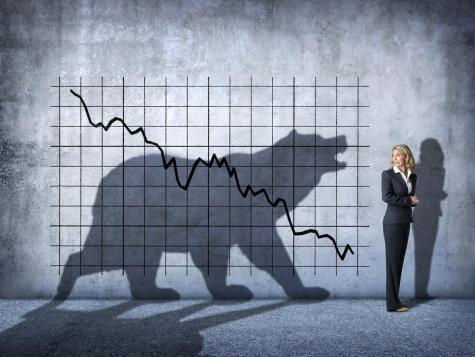
Turn on CNBC, Fox Business or any other news media and you’re hearing a term that is never any fun and it’s … “bear market.” A bear market refers to when the market drops by 20% or more within a sustained period of time – typically two months or more. Another definition that is used to describe bear markets is when investors are more risk-adverse than risk-seeking. It has been a couple of years since we have seen a bear market which explains the reaction that has spurred from the current state of the market. In efforts to reel you back in to facts instead of the emotions that the media can evoke in you, here are some friendly reminders about bear markets: bear markets are normal, they will come to an end, they will be painful.
Take a look at this chart. You can see as of June 15th the S&P 500 was down 20.72% year to date. Bear market for the S&P 500 – check! Other parts of the market have been in a bear market for much of the year. The Nasdaq, which tracks tech heavy stocks is down 29.82% for the year – bear market for the Nasdaq – check! The Russell 2000 which tracks many of your smaller company stocks (aggressive growth in Dave Ramsey language) down 23.94% for the year – bear market for the Russell 2000 – check!

How Long Does a Bear Market Last?
Take a look at this chart. The average bear market for the S&P 500 is -30.2% and takes 338 days to go from peak to trough (bottom). However there have been very short-lived bear markets, such as 2020 when it only took 33 days to reach peak to trough, 1998 when it only took 45 days to reach peak to trough and 1990 when it only took 87 days. The peak for the S&P 500 was reached on January 4th of this year thus we are currently 162 days into this bear market. In 2011, the market fell into a bear market because of European credit issues along with slowing growth in the United States. During that market we saw it take 157 days to reach the bottom and roughly 144 days to breakeven.

Additionally, the longest bear market was in 2002 when it took 929 days to reach the trough and then 1,694 days to breakeven. Finally, the decade with the most bear markets was the 1970’s, which not surprisingly was during a time of high and uncontrolled inflation. Every market is different and nothing is guaranteed. Mark Twain said, “history never repeats itself, but it often rhymes.”
Unfortunately, we can’t tell you when the bear market is going to end. Conversely, we do know it won’t last forever and thus the current market provides excellent opportunity for entering new money into your retirement accounts through either your 401(k) or Roth IRA.
Stock Market Provides Good Risk-Adjusted, Inflation Protected Returns Historically
Looking back through history you are able to see that stock investments like the S&P 500 are not positive 100% of the time. If you look at the bottom left-hand side of the Prudential Asset Allocation Chart you’ll see dating back to 1992 that the S&P 500 is positive 83% of the time and negative for only 17%. This results in an average gain of 17.91% when the market is positive and an average return of 10.65% when accounting for the negative returns one would have received, since 1992. Economic cycles are guaranteed. Dave Ramsey says, "it's going to rain, so you better have an umbrella." Although variables for the cycle can vary, it is still a cycle and it will not last forever.
Should you desire to discuss your portfolio or individual situation, please reach out to one of our Financial Advisors today.
